They come in many shapes, sizes, and styles, and their main purpose as we all know is connecting two points. But some bridges are so much more than just a convenient construction and many of them have become iconic structures. They also hold a special place in both modern and ancient architecture and design, with bridges being jaw-dropping works of art that have the power to attract thousands of tourist every year.
Among the many beautiful bridges that over the centuries have become symbols of certain cities is the Krämerbrücke (the Merchant’s Bridge) in the city of Erfurt, Germany.
The Krämerbrücke is built over the Breitstrom (a branch of the Gera River) and it is more than 600 years old. The bridge is tightly packed with beautiful half-timbered building on both sides, with a small alley in the center.
Today, just as in the past, the buildings serve as shops that sell a variety of local handmade products: wood carvings, fabrics, hand-painted ceramics, hand-blown glassware, jewelry, wood carvings, and antiques. You can also enjoy some delicious traditional Thuringian specialties in one of the restaurants on the bridge.
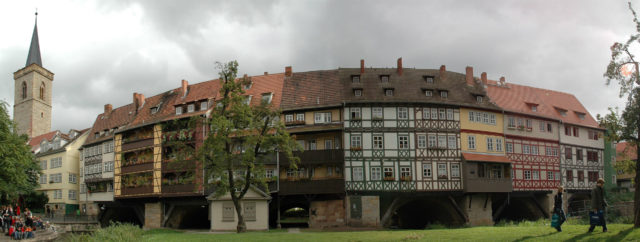
The bridge was originally made out of wood. It was built in 1117 as part of the Via Regia trade route, the oldest and longest road across Europe. But after repeatedly getting burned down, the city council decided to rebuild it with a more suitable material. The 260 feet long lime and sandstone bridge was completed in 1325. The new bridge had half-timbered houses and two churches, one at each end of the bridge.
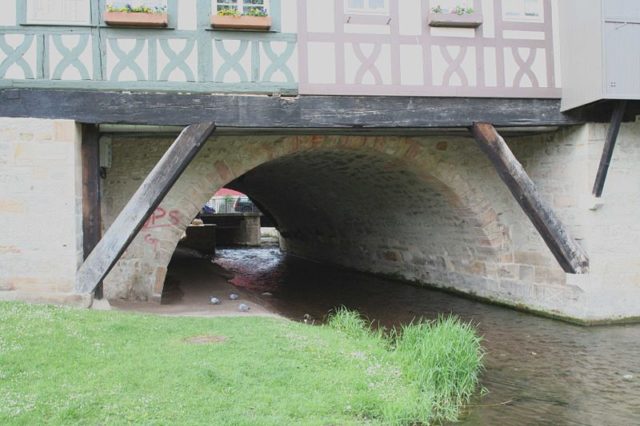
There was another big fire in the 15th century, one that destroyed nearly everything in the city of Erfurt. Most of the structures on Krämerbrücke were burned down, but the main structure was intact. After this, the bridge got the current form. It has 32 narrow houses that are three stories high. There is only one of the two bridge churches left, the Church of St. Aegidius.
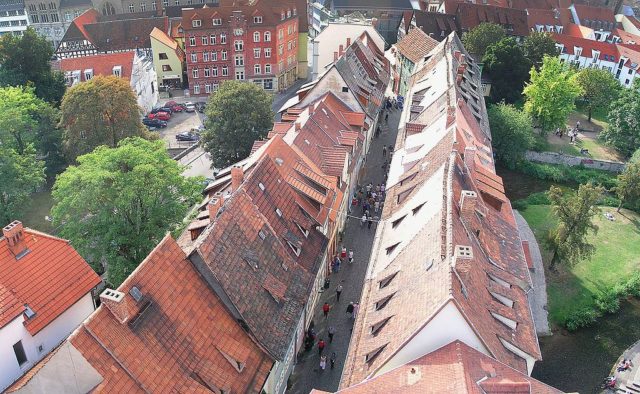
The ground levels of the houses are mainly used as shops while some the upper levels of the building are still used as private residences. Except for the houses numbered 15, 20, 24 and 33, all houses are municipal property.
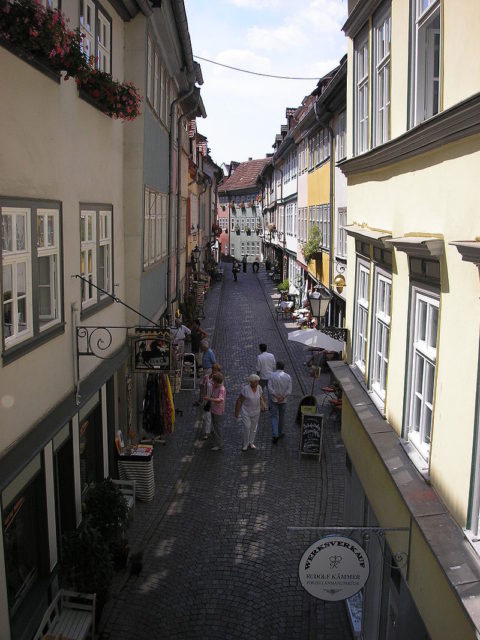
The municipal administration maintains a foundation for the conservation of this unique historical monument, the Krämerbrücke Foundation. In the “House of Foundations” (Krämerbrücke 31), a permanent exhibition informs about the past and present of the Krämerbrücke together with a 1:100 scale model of it.
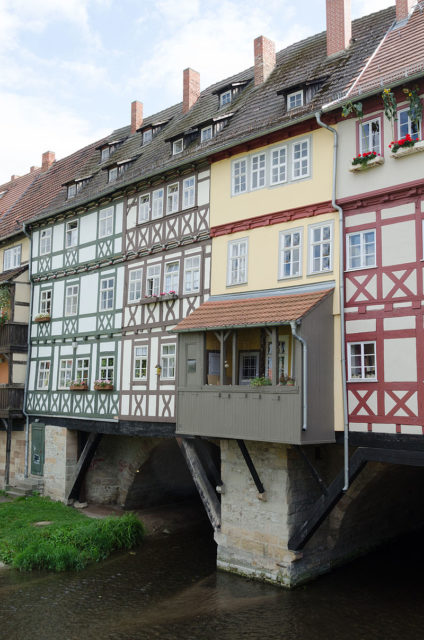
The bridge is one of the main attractions in the city of Erfurt, which makes it easy for one to understand why the locals consider it as the jewel of the city and celebrate its beauty each year with a festival called Krämerbrückenfest. Every year, in the third weekend of June, people from all over the world come to Erfurt to celebrate the town’s history and to enjoy some good music and art.
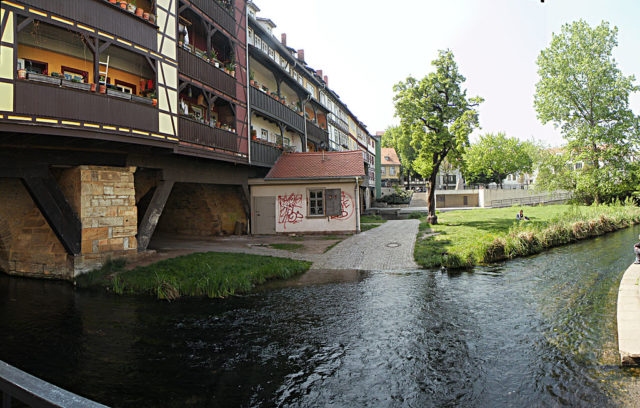
Erfurt is the capital city of Thuringia and the main city nearest to the geographical center of modern Germany. The city had several notable residents from the cultural history. Martin Luther, the father of the Protestant Reformation, attended the University of Erfurt and received his bachelor’s and master’s degrees in theology there.
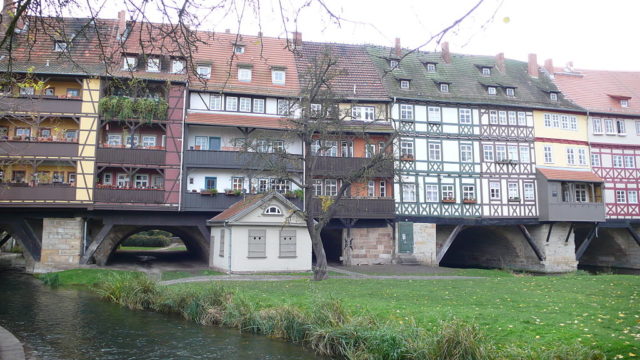
Luther lived there as a student from 1501 to 1511 and, as a monk, from 1505 to 1511. Johann Sebastian Bach’s father Johann Ambrosius Bach was born here. Bach’s parents were married in 1668 in a small church, the Kaufmannskirche (Merchant’s Church), that still exists on the main square, Anger.
German sociologist and political economist Max Weber, whose study The Protestant Ethic and the Spirit of Capitalism is among the most famous in social sciences, was also born in Erfurt.
